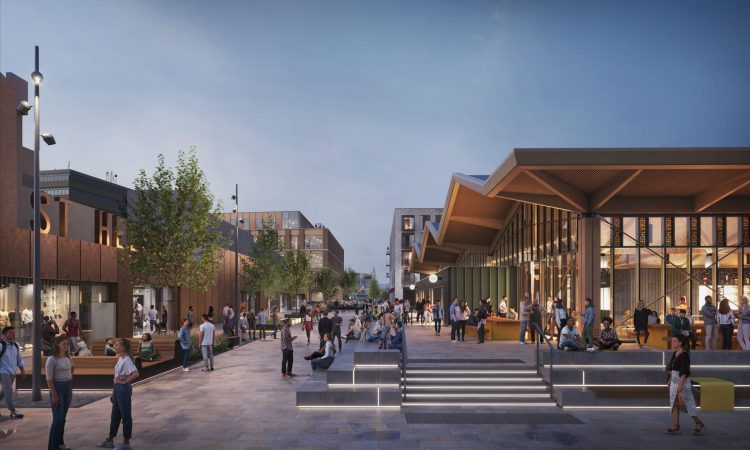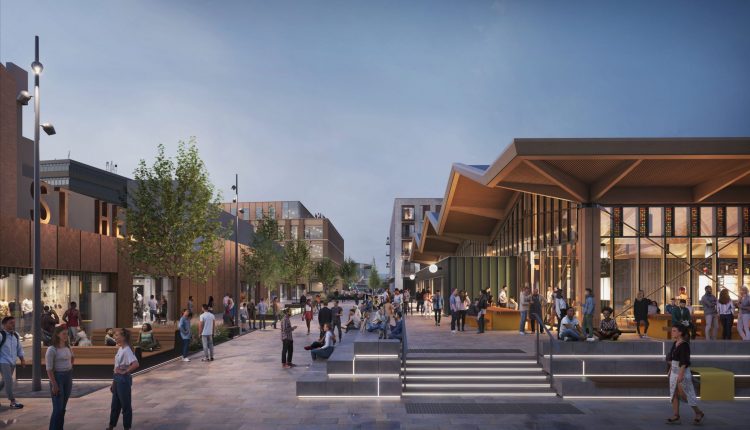Sean Traynor, Director of Strategic Growth at St Helens Borough Council, on how the 21st century incarnation of the traditional British market can be a powerful driver of growth and regeneration

Britain’s market towns face remarkably similar challenges when it comes to adapting to changing shopping habits and creating spaces that serve the community well.
On the one hand, out-of-town parks and 24/7 online retail continue to redefine the High Street.
On the other, if you are lucky enough to live somewhere with a market tradition, there’s often a sense that a market itself is a trump card that can serve as a catalyst for creating an attractive, sustainable, and family-friendly environment.
The ‘experience economy’ is very much part of the dialogue today about how we can shape the future of towns and cities. It is of course a compelling topic, but Britons have for centuries shown enthusiasm for experiencing markets and all that they bring.
Markets are usually in prime areas of the town centre and serve as a focal point. Used by all sections of society, they are places where people of different incomes, ages, genders, and cultures can spontaneously meet and interact.
By providing that space they help foster a sense of belonging and identity.
With a low barrier to entry, markets also support independent firms and encourage start-up enterprises. There are thousands of micro and small to medium sized businesses operating in markets around the country.
This part of the economy rarely features in the wider dialogue about UK Plc, but its attributes should not be overlooked. Traders can add originality and uniqueness to a town centre mix, and some do scale and grow, creating jobs and opportunity.
In fairness, the role markets can play in unlocking town centre regeneration is increasingly being recognised by policy makers and in the approach to the Levelling Up.
In our borough, for instance, Earlestown has received £20m of investment from the Levelling Up Round 2 Fund, which has been matched by significant council resources, to help return the town centre to its former glory as a thriving market town.
The investment will revitalise the Market Square and wider public realm, including for the provision of market canopy, and reimagine its Grade-II listed derelict Town Hall as a community and workspace hub.
Funding support has also been provided in St Helens town centre, where a new 25,000 sq ft Market Hall is set to be the first phase centrepiece of a transformational regeneration scheme.
Together with our partners, the English Cities Fund (ECF) – we are bringing forward plans for a new Market Hall as the centrepiece of a transformational mixed-use area that includes a 120-bedroom globally branded hotel, 75,000 sq ft of office space, 64 new homes and 11,000 sq ft modern retail space in the initial phase.
This project represents the biggest ever single investment in St Helens town centre and involves the Council itself committing a £69.2m package to Phase One. Backing is also being made available in the form of £21.49m in grants from the UK Government and equity investment by ECF.
Specifically, there are two related UK Government Town Deal grants totalling £10.49m. The Phase One proposals have also been awarded £0.812m from the One Public Estate Brownfield Land Release Fund to help deliver the residential element.
In addition to this backing, the Liverpool City Region Combined Authority has also provided financial support for the new St Helens bus station, which will be extended and renewed with a new modern interchange to encourage public transport and active travel usage.
Given its prominence and overall importance in terms of what we are working to achieve in St Helens town centre, the new Market Hall has been the subject of many months of research and reflection.
We have taken advice from specialist consultants in considering how to deliver a modern interpretation of the classic market concept.
The objective is to bring footfall and animation to the town centre during the day and evening, supporting the local economy and establishing a vibrant, appealing sense of place.
In general, lettable units within contemporary market halls typically fall into three categories – hospitality, retail and service. Other types of units are feasible, but these are typically usable spaces rather than lettable spaces per se i.e. private dining, co-working, digital hubs, and meeting/teaching spaces.
We have 18 units in the scheme we are bringing forward and want a mix of uses to ensure the new Market Hall is vibrant and attractive.
Hospitality businesses are typically the anchor, with a range of businesses from bars to coffee shops to street food kitchens. Street food units have the potential to make the biggest financial contribution, operating on turnover rents in which a percentage of the trader’s net income is paid to the market operator in rent.
It follows that we have to get the balance right; too many street food units and the maximum income levels for the businesses could become unviable. Too few, and the venue would risk lack the diversity and variety to attract strong footfall levels.
Opening hours must also move with the times. Modern market businesses remain open when the venue is busy, which might mean trading until 6 or 7pm, and not closing at 3pm. The peak trading times for a florist, for example, could be Friday and Saturday evenings while Market Hall visitors enjoy food, drink and entertainment.

We also recognise the importance of creating a welcoming sense of arrival, and our plans include a provision for a space inspired by the proud heritage of St Helens where visitors can enjoy live entertainment alongside their food and drink.
The intention is also to have a feature bar that will create a focal point for the space and help set the tone – an attractive, inclusive, and engaging high-quality environment.
One of the biggest drivers of the entire town centre regeneration project we are delivering is ensuring that everything retains a sense of local heritage and what we call ‘St Helens-ness’.
So the structure of the new Market Hall will reflect the town’s original market constructed in 1850. The design features stained-glass windows to reflect St Helens long standing status as a world leader in glass making.
Smaller details include plans for inscriptions of St Helens heritage in stone along footpaths leading to the site, specially designed glass detailing into outdoor seating and educational signage to provide information about St Helens’ history.
We feel we are updating a proven concept. The project team is looking forward to the day the market opens in 2026, a moment when St Helens will have taken a giant step towards recreating its heyday.
There is some irony here: market towns have retained their appeal across the hundreds of years as people enjoy the amenities they offer, the human scale, and the local convenience.
Yet it has perhaps taken changing shopping habits to usher the role of market towns back onto some agendas. There is a sense that local-first matters more today than it has for a very long time.
In our post-pandemic, hybrid working future, where there is an increasingly urgent need to find more sustainable ways of living and working, markets certainly have a big contribution to make and can be part of a smarter future.

